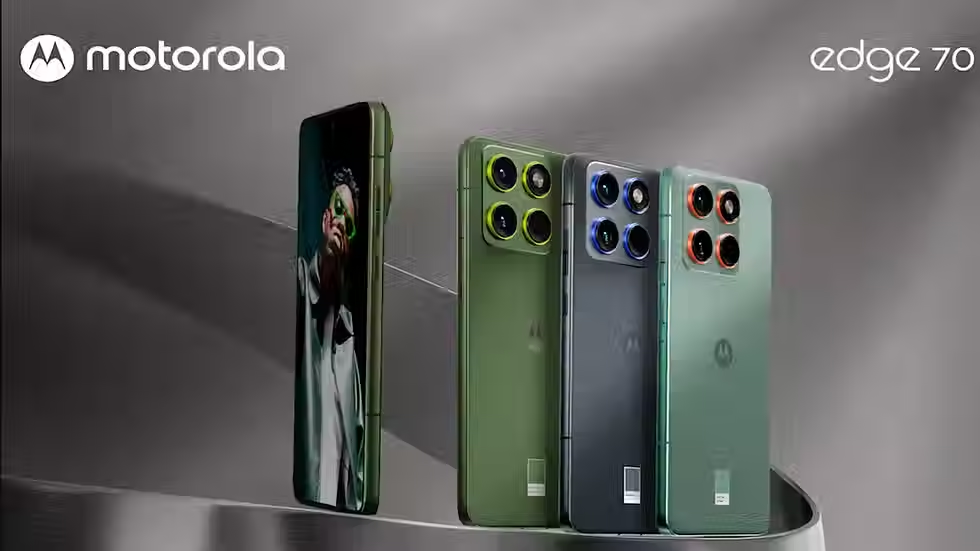Huawei Mate XT 2 Leak Hints September Launch with Satellite Connectivity Upgrades and New Tech
- Androbranch NEWS

- Jun 23
- 4 min read
What you need to Know
Huawei Mate XT 2 is expected to launch in early September 2025, possibly rivaling the iPhone 17 series.
The device is Huawei’s second tri-fold smartphone, following the original Mate XT.
The Mate XT 2 may support calling and messaging via satellite in remote areas.
Huawei aims to push innovation in foldable phones and emergency communication with this launch.

Huawei is again entering the fray of the foldable smartphone niche. The company is said to be preparing to unveil its next-generation tri-folding phone, Huawei Mate XT 2, in the second half of the year 2025, with an aim to launch it in September. As per new leaks from credible insiders on Weibo, such as @SmartPikachu, the Mate XT 2 is said to be equipped with industry-leading low-orbit satellite connectivity, better hardware, and significant durability enhancements.
Huawei Prepares for Its Second Tri-Fold Smartphone
Following the official release of the first Mate XT in the previous year, Huawei also appears set to continue the roll of innovation by announcing the second-gen tri-fold smartphone. The launch window rumored to happen early September 2025 is just about the same time Apple usually holds its annual iPhone launch event, indicating that Huawei might again attempt to upstage its rival by launching its ultra-premium foldable around the same time as the iPhone 17 series.
The Huawei Mate XT 2 may be a breakthrough in the tri-fold form factor space. Though information about the size of the display or the hinge system remains a secret, one thing is certain that Huawei is going all out in terms of both design and tech this year to target the premium smartphone space.
Satellite Connectivity 2.0
One of the standout rumors surrounding the Mate XT 2 is the integration of low-orbit satellite communication technology, an upgrade from the Tiantong satellite support seen in previous Huawei models. This leap forward is made possible through Huawei’s strategic collaboration with China Star Network, which is reportedly helping the brand test and implement low-Earth orbit (LEO) satellite internet technology.
Therefore, what does this entail for users?
Low-orbit satellite communication enables smartphones to directly link to satellites between altitudes of 500 and 1200 kilometers. Not only does this provide less latency with quicker and more real-time communication but also better bandwidth and power efficiency than conventional high-orbit satellites. Practically, in real-world applications, this could mean improved call quality, secure messaging, and even simple internet access in remote, disaster-affected, or unconnected areas.
Improved Satellite Communication Experience in Remote Regions
The new Huawei Mate XT 2 is rumored to provide a superior and more useful satellite communication experience compared to the previous model. The previous Mate XT model already supported phone calls and messages over satellite, but the Mate XT 2 may introduce improved and more reliable satellite-based SMS and call functions, potentially backed by 6G-readiness.
This could be a game-changer, especially in regions where traditional networks fail or are frequently disrupted. The use of LEO satellites aligns with Huawei’s vision of creating resilient, global connectivity even without conventional infrastructure.
Performance and Camera Updates
Satellite technology may be the key highlight, but the Huawei Mate XT 2 should also bring updates under the hood. As per the leak, Huawei should upgrade performance through a next-generation chipset, although the processor details are yet to be revealed. Rumors indicate it could be a new Kirin or HarmonyOS-based SoC with improved AI and power efficiency.
The camera system, already a particular strength in the high-end lineup of Huawei, might see a major update. Anticipate enhanced sensors, enhanced computational photography, and even an updated periscope lens that provides quality zoom without thinning out in foldable design.
In addition, build quality and sturdiness will also be a major emphasis for Huawei this year. The first Mate XT was criticized as being somewhat brittle because of its testing-phase design. With the Mate XT 2, however, Huawei appears eager to close that gap, adding more durable hinge systems, more resistant foldable screens, and improved thermal management.
Huawei Mate XT 2 vs Apple iPhone 17 Series
It’s no coincidence that Huawei is aiming for a September 2025 launch for the Mate XT 2. This timeline closely mirrors Apple’s annual unveiling event, where the Cupertino-based tech giant is set to launch the iPhone 17 lineup. While the iPhones continue to dominate in traditional smartphone segments, Huawei’s tri-fold flagship could appeal to premium users looking for versatility, innovation, and exclusive features like satellite connectivity.
If Huawei manages to debut the Mate XT 2 with low-orbit satellite internet, it would place itself far ahead of many of its Android competitors, since most current-gen flagship devices are still stuck with high-orbit or plain emergency satellite messaging.
Huawei remains at the forefront of innovation in the foldable phone market, and the Mate XT 2, which is on the horizon, is setting up to be a great example of futuristic technology coming together with real-world applications. With low-orbit satellite connectivity, durability updates, and top-end performance, Huawei is poised to be a solid contender not only in the Android foldable segment, but even against non-foldable premium competitors.
As we approach September, expect even more leaks and official teasers to solidify these features and maybe even unveil Huawei's vision for the new wave of satellite-connected smartphones. Keep an eye on AndroBranch for all the latest news on the Huawei Mate XT 2 and other global flagship releases.













Comments